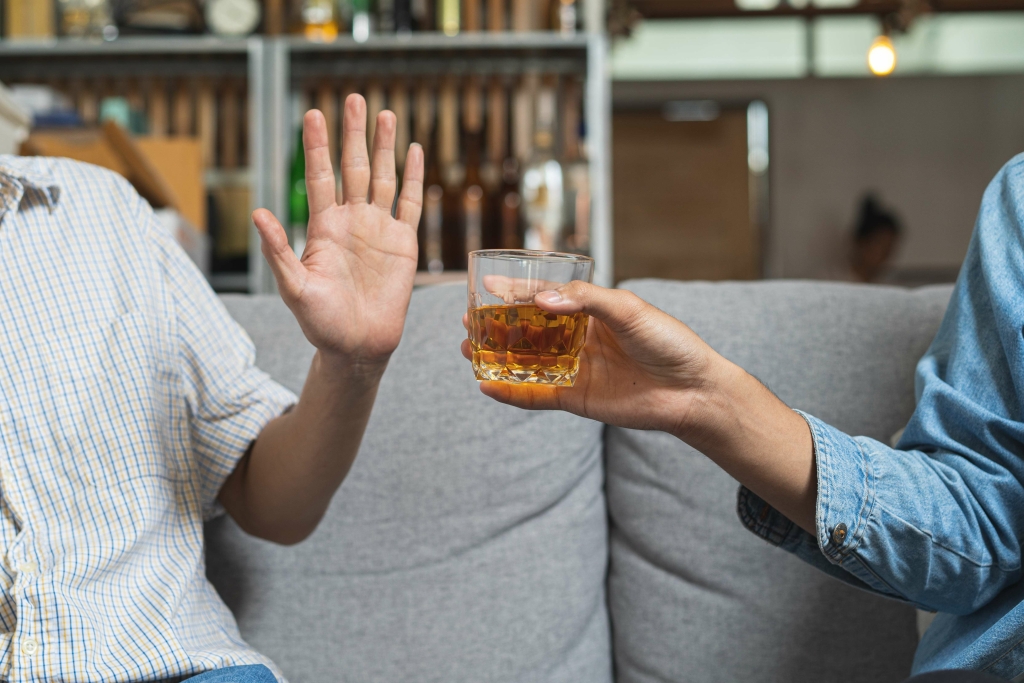May 2022
Monthly Archive
Monthly Archive
Circadian rhythms affect how the body responds to alcohol, depending on the timing of alcohol intake. Long-established research shows the body metabolizes alcohol differently at different times of day. Studies have shown the body is more effective at processing alcohol at certain times of the day than others.

You’ll do yard work and grocery shopping alone—so why not the fun stuff? Researchers have found that people who go to the movies, see a concert, or visit an art gallery solo experience mental-health benefits similar to those of people who goin groups. People who go to bed with alcohol in their system may be more likely to wake early in the morning and not be able to fall back to sleep, another consequence of the rebound effect. For some addicts, the problem may be their urge to constantly sip on something. It can be quite beneficial to replace alcohol with warm milk or tea.

In fact, one small study found that participating in a six-month exercise program helped participants fall asleep almost 10 minutes faster19 on average. They reduce stress15 and pain16, stimulate the release of feel-good hormones like serotonin and dopamine17, and relax tight, sore muscles18, making https://www.zeldalegacy.net/page/4/ it easier to fall asleep. Getting a dose of natural light early in the day can help normalize your circadian rhythm. If natural light is not an option, you can talk with your doctor about using a light therapy box. Meditation and mindfulness can help reduce anxiety, which can often disrupt sleep.
So, skip the booze and lean on the tips here to help you fall asleep and stay asleep. If you’ve had a bad night of sleep, it can be tough to skip the coffee, but studies indicate that caffeine consumption21 can interfere with sleep, which could mean another night of tossing and turning. Aromatherapy is the practice of diffusing essential oils for overall well-being benefits, with each oil offering its own unique benefits. Lavender essential oil, specifically, has been found to promote a sense of calm11 and create an atmosphere that encourage restorative rest. While there are many ways to utilize functional fragrance throughout out the day, pillow mists make for an easy way to cradle your senses in the nighttime. If you really want to use an e-reader, wear blue-light-blocking glasses9 in order to avoid the effects of blue light exposure on your sleep.

However, make sure to read a good old-fashioned paper book rather than an e-book. E-readers, as electronic devices, have been shown to have negative effects on sleep, circadian rhythm, and alertness due to the blue light they emit. As part of the circadian rhythm, the body’s core temperature naturally drops https://stalkeruz.com/ten-chernobylya/kto-znaet-paskhalki-i-prikoly-v-stalkere.html?page=2 at night. As such, it has been found that cooling down prior to bed helps you fall asleep more quickly7. Excess light exposure can throw off your sleep and circadian rhythm. Blackout curtains over your windows or a sleep mask over your eyes can block light and prevent it from interfering with your rest.

Daytime sleepiness, reduced concentration, irritability, and other symptoms can then result. Some individuals find that alcohol consumption can trigger hot flashes and night sweats during menopause. However, more research is necessary to determine whether this is a common occurrence. Alcohol causes https://lnif.ru/en/korotkie-stishki-pro-son-zdorovyi-son-polza-stishkov-dlya.html a higher production of the stress hormone cortisol, which regulates the body’s stress response and initiates wakefulness. Disruptions to this hormone can lead to reduced quality sleep and cognitive difficulties. However, researchers do not agree on how alcohol interferes with REM sleep.
In the first half of the night, when the body is metabolizing alcohol, studies show people spend more time in deep, slow-wave sleep and less time in REM sleep. REM sleep, which gets shortchanged in the first half of the night under the influence of alcohol, is important for mental restoration, including memory and emotional processing. Would one experience these alcohol withdrawal symptoms if they drank 2 to 3 drinks a night and then quit cold turkey? I have recently decided to quit in order to cut out my sugar in an effort to better my cholesterol. I haven’t slept well in eight days so I am searching for an answer. Caffeinated drinks, including coffee, tea, and sodas, are among the most popular beverages in the world.
Alcohol interferes with the brain’s ability to receive chemical messages involved in breathing, which decreases the body’s respiratory drive and increases the likelihood of pauses in breathing. The Recovery Village Cherry Hill at Cooper offers comprehensive addiction treatment for drug and alcohol addictions and co-occurring mental health conditions. The Recovery Village Cherry Hill at Cooper provides a full continuum of care, from medical detox and inpatient rehab to aftercare. We are here to help you and those you love recover from addiction and begin a healthier, alcohol-free future. Contact us to learn more about alcohol addiction treatment programs that can work well for your needs in recovery. The bidirectional nature of the relationship between alcohol and sleep is also noteworthy.
0 comments Thursday 12 May 2022 | Porl | Sober living

However, even these target-specific drugs produce complex secondary neuroadaptations that contribute to drug use disorders. It is worth noting that the function of many molecules in mammalian neurons appears to be remarkably insensitive to ethanol (Yamakura et al., 2001). Thus, earlier ideas about ubiquitous molecular effects due to changes in membrane fluidity are not helpful in understanding how ethanol alters neuronal function (Peoples et al., 1996). Even if fluidity changes occur, these changes lead to altered neuronal function, and thus, we must examine the proteins that dictate neuronal function.
The different ligand-binding and transmembrane domains of these proteins likely underlie this difference. The current thinking is that ethanol interacts with membrane-spanning domains within these proteins and the subsequent allosteric changes in conformation produced differ for the different LGIC subtypes (Möykkynen and Korpi, 2012; Olsen et al., 2014). Ethanol also modulates nicotinic acetylcholine receptor (nAChR) function in a subunit-specific manner (Davis and de Fiebre, 2006; Hendrickson et al., 2013; Rahman et al., 2016) and potentiates 5HT3Rs (McBride et al., 2004). For the brain, the difference between normal rewards and drug rewards can be likened to the difference between someone whispering into your ear and someone shouting into a microphone. Just as we turn down the volume on a radio that is too loud, the brain of someone who misuses drugs adjusts by producing fewer neurotransmitters in the reward circuit, or by reducing the number of receptors that can receive signals. As a result, the person’s ability to experience pleasure from naturally rewarding (i.e., reinforcing) activities is also reduced.


In general, DTI findings in alcoholism indicate a greater role for demyelination than axonal degeneration in the compromise of white matter integrity. This distinction provides convergent validity with postmortem findings, establishing DTI metrics as difference between drugs and alcohol in vivo markers of white matter neuropathology. An outcome of this series of pathological studies was the development the New South Wales Tissue Resource Centre (Sheedy et al. 2008) at the University of Sydney, Australia, funded in part by the NIAAA.
To add to that, repeated use of drugs can damage the essential decision-making center at the front of the brain. This area, known as the prefrontal cortex, is the very region that should help you recognize the harms of using addictive substances. • the hippocampus, seat of memory; under the influence of dopamine, the memory of an expected reward results in overactivation of the reward and motivation circuits and decreased activity in the cognitive control centers of the prefrontal cortex. It stimulates the nucleus accumbens, and overactivity of the nucleus accumbens progressively weakens its connectivity to the prefrontal cortex, seat of executive functioning. One result is impaired judgment, decision-making, and impulse control, a hallmark of addiction.


Notably, no difference in binding in the ventral striatum or caudate or putamen was found, however, there was a significantly higher D3 receptor availability in the hypothalamus that was linked to higher lifetime use of alcohol [130]. Preclinical imaging has identified D3 receptor antagonism as a plausible therapeutic target to ameliorate alcoholism and its potential efficacy as an intervention is currently under investigation using fMRI [131] and combined PET/MR techniques [132]. Choice impulsivity, the tendency to make choices that lead to suboptimal, immediate or risky outcomes is often measured using a delay discounting task to assess an individual’s preference for a smaller, immediate reward compared with a larger, delayed reward [112]. The literature regarding the effects of alcohol on choice impulsivity is varied with findings that alcohol (0.7 g of alcohol/kg body weight) consumption decreased choice impulsivity in non-dependent drinkers [113], whereas another found alcohol (0.2–0.8 g of alcohol/kg body weight) intoxication increased choice impulsivity [114]. Individuals who scored higher in trait impulsivity measures exhibited greater choice impulsivity than their lower trait impulsive counterparts [115]. As adolescents mature, they undergo complex developmental changes, especially in their brains.
According to the classical double dissociation model, to be able to draw the conclusion that a certain brain structure or network is the neural source of a particular cognitive or motor function, it is essential to demonstrate first an association between the two. This can be done by demonstrating that compromised performance on a test assessing the function (e.g., on the matrix reasoning test, which assesses nonverbal intelligence) occurs with a brain lesion in the hypothesized neural source (e.g., the parietal cortex). Then, the next crucial step is to demonstrate a double dissociation using tests for two different functions https://ecosoberhouse.com/ (e.g., the matrix reasoning test and a test of spatial working memory) and assessing lesions in two different brain regions (e.g., the parietal cortex and the prefrontal cortex). Double dissociation exists if compromised performance on test 1 (i.e., matrix reasoning) occurs with a brain lesion in site 1 (i.e., parietal cortex) but not site 2 (i.e., prefrontal cortex), whereas compromised performance on test 2 (i.e., spatial working memory test) only occurs with a brain lesion in site 2 (i.e., prefrontal cortex). However, uncomplicated alcoholics normally do not endure discrete and complete structural brain lesions, per se.
Finally, an important caveat to much of the present evidence is the generalizability of small cohort cross-sectional studies. To better characterize brain function and behavior following exposure to alcohol both acute and chronic, as well as improve treatment outcome and reduce risk of relapse, it is imperative that large-scale studies with longitudinal designs are conducted. Although the neuropsychological impairments attendant to alcoholism have existed through the centuries, understanding of their neural mechanisms has required identification of selective functional components and brain integrity affected and not affected, together with the knowledge of the course, extent, and loci of disruption and repair. What researchers found 40 years ago is a likely reflection of the disorder seen today, but a mechanistic understanding of the full constellation of effects and the scope and limit of improvement with sobriety has evolved from being considered widespread and nonspecific to being specific in terms of brain circuitry and systems.
Specific groups of neurons express one or more channels that are direct or indirect ethanol targets, allowing for neuron-specific ethanol modulation of activity. In the case of neurons whose intrinsic activity is ethanol insensitive, it remains to be determined whether they lack ethanol target channels or whether the factors that control sensitivity to ethanol (e.g., post-translational modifications) differ between ethanol-sensitive and insensitive neurons. Future studies should use both top-down and bottom-up approaches to examine how acute and chronic ethanol exposure affects excitability and firing in different neuronal populations in brain regions with key roles in the behavioral actions of ethanol and in which ethanol-sensitive molecules contribute to these changes. Ethanol has well-known locomotor and reinforcing effects, and certainly the latter contribute to drinking in some capacity.
0 comments Wednesday 04 May 2022 | Porl | Sober living